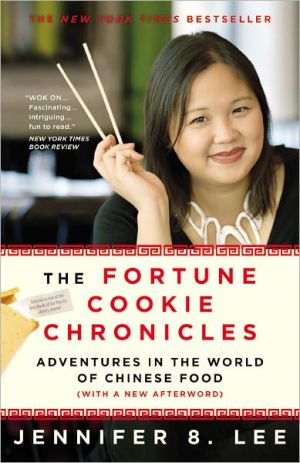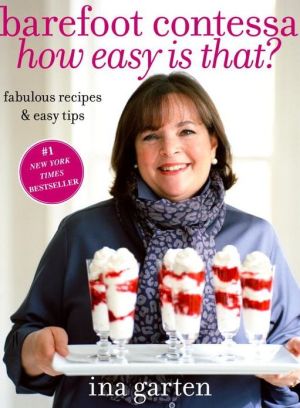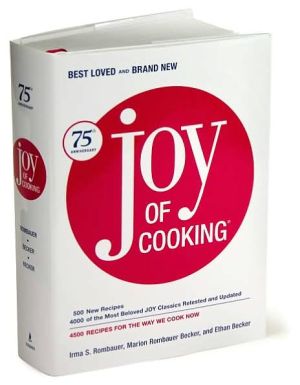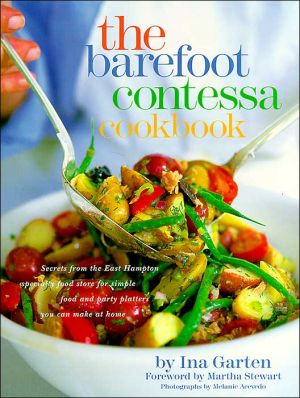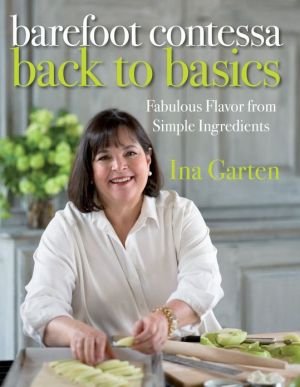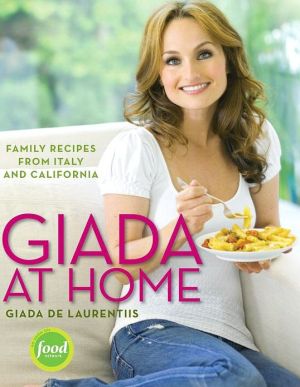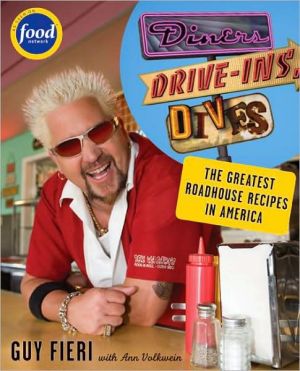The Fortune Cookie Chronicles: Adventures in the World of Chinese Food
If you think McDonald's is the most ubiquitous restaurant experience in America, consider that there are more Chinese restaurants in America than McDonalds, Burger Kings, and Wendys combined. New York Times reporter and Chinese-American (or American-born Chinese). In her search, Jennifer 8 Lee traces the history of Chinese-American experience through the lens of the food. In a compelling blend of sociology and history, Jenny Lee exposes the indentured servitude Chinese restaurants expect from...
Search in google:
If you think McDonald's is the most ubiquitous restaurant experience in America, consider that there are more Chinese restaurants in America than McDonalds, Burger Kings, and Wendys combined. New York Times reporter and Chinese-American (or American-born Chinese). In her search, Jennifer 8 Lee traces the history of Chinese-American experience through the lens of the food. In a compelling blend of sociology and history, Jenny Lee exposes the indentured servitude Chinese restaurants expect from illegal immigrant chefs, investigates the relationship between Jews and Chinese food, and weaves a personal narrative about her own relationship with Chinese food. The Fortune Cookie Chronicles speaks to the immigrant experience as a whole, and the way it has shaped our country. The Washington Post - Christine Y. Chen Reading Lee's book is almost like watching a documentary travelogue. From all-you-can-eat buffets in Kansas to the small southern Chinese village of Jietoupu, where she tracks down descendants of General Tso (who, natch, have never heard of, seen or tasted their forefather's infamous chicken dish), the author takes readers by the hand and brings them on her adventure…Where Lee really shines, though, is in describing the people who have cooked, served and delivered America's favorite cuisine. The Fortune Cookie Chronicles isn't just about the popularization of Chinese food; it's also a story of Chinese immigrants in America.
The Fortune Cookie Chronicles \ \ By Jennifer 8. Lee \ Twelve \ Copyright © 2008 Jennifer 8. Lee\ All right reserved.\ ISBN: 978-0-446-58007-6 \ \ \ \ \ Chapter One \ American-Born Chinese \ There are some forty thousand Chinese restaurants in the United States-more than the number of McDonald's, Burger Kings, and KFCs combined.\ Tucked into exurban strip malls, urban ghettos, and tiny midwestern towns that are afterthoughts for cartographers, Chinese restaurants have spread nearly everywhere across America-from Abbeville, Louisiana, to Zion, Illinois, to Navajo reservations, where, in a distinction shared with only a handful of businesses, they're exempted from tribe-member ownership. Old restaurants, clothing stores on Main Streets, and empty storefronts have been reborn as Chinese restaurants. The Washington, D.C., boardinghouse where John Wilkes Booth and his accomplices planned Abraham Lincoln's assassination is now a Chinese restaurant called Wok n Roll.\ Chinese restaurants have long been a weekly or monthly ritual for many Americans.\ As far back as 1942, chop suey and chow mein were added to the U.S. Army cookbook. Jonas Salk, while developing the polio vaccine in the early 1950s, would eat his lunch at Bamboo Garden on Forbes Avenue, near the University of Pittsburgh, nearly every day. He always ordered the same thing: a bowl of wonton soup, an egg roll, rice, and chicken chow mein made with homegrown bean sprouts-all for $1.35.\ Chinese restaurants are sought out for special events, too. In 1961, before the Freedom Riders left for the first fateful bus ride through the Deep South to protest segregation, a number of that company met for dinner at a Chinese restaurant in Washington. "Someone referred to this meal as the Last Supper," said John Lewis, then a young theology student from rural Georgia, later a congressman. In October 1962, emissaries for John F. Kennedy and Nikita Khrushchev met secretly at Yenching Palace in the Cleveland Park neighborhood of Washington to work out a solution to the Cuban missile crisis. Chinese restaurants were neutral territory.\ Nearly everyone has a go-to Chinese restaurant. Dwight Eisenhower ordered his chicken chop suey from Sun Chop Suey Restaurant on Columbia Road in Washington, D.C., for decades. When he became president, the FBI investigated every employee at the restaurant (just as a precaution). Likewise, Peking Gourmet Inn outside Falls Church, Virginia, had to install a bulletproof glass window near table N17. That is where the Bushes, both father and son, sit at their favorite Chinese restaurant.\ It's not surprising that the Powerball officials heard the same tale repeated over and over again across the twenty-nine states, from coast to coast. The stories were different. The stories were the same. It was takeout. It was sit-down. It was an all-you-can-eat buffet. It happened years ago, months ago, earlier that day. It was dinner. It was lunch. It was where they ate every week with coworkers. It was on a family vacation to a neighboring state. The number had been in a fortune cookie they had cracked open themselves. The number had been on a fortune found while cleaning a car or waiting at a convenience-store counter. But the one thing all those stories had in common was the starting point: a meal from a Chinese restaurant that had ended with a fortune cookie.\ The lottery story ran in AM New York, the commuter daily I picked up one morning to read on the New York City subway. The one-paragraph article said the March 30 Powerball had been pummeled with an unusually large number of winners, 110 in all, largely because of fortune cookies.\ I perked up.\ I am obsessed with Chinese restaurants. Like many Americans, I first discovered them in my childhood. I grew up during the 1980s on the Upper West Side of Manhattan, where Broadway is sometimes called Szechuan Alley for the density of Chinese restaurants along it. My parents had first settled in the area when my father was studying for his Ph.D. at Columbia University; because my mom never learned to drive, our family never moved out of the city. As a result, I was raised not too far in time and place from many of the changes that revolutionized Chinese food in the United States.\ My siblings and I are known as ABCs, American-born Chinese. We're also known as bananas (yellow on the outside but white on the inside) and Twinkies (which has more of a pop-culture but processed ring to it). There are a lot of inside jokes among immigrant families. My family even has one embedded in the children's names. My parents named me Jennifer; my sister is Frances; my brother is Kenneth. If you string together our first initials, you get JFK, which, my parents tease, is the airport they landed at when they first came to America.\ My parents arrived in the United States courtesy of the Immigration Reform Act of 1965, which opened the doors to educated and skilled workers like my father and dramatically shifted the balance of immigration away from Europe. Countries like Taiwan, South Korea, and India stood ready to offer the best products of their meritocratic educational systems.\ My mom took care of the home and did most of the cooking, while my father worked on Wall Street. But like many families in our area, we'd order Chinese takeout when she was too busy to cook. As a girl I would run down to the neighborhood Chinese restaurant with a crisp twenty-dollar bill in my pocket. Barely tall enough to see past the counter, I'd solemnly order dishes from the big white menu, using the Chinese names that my mom had carefully taught me. (Without exception, the vocabulary words that Chinese-American kids-and immigrant kids in general-know best are almost always related to food.)\ Then I'd lug home my treasure: a plastic bag of steaming, generously stuffed trapezoidal white cartons. Our family gathered around the table as we pulled out the boxes, each one bursting with the potential of anonymity. Out came chopsticks, the little clear packets of black soy sauce, and crunchy fortune cookies. Each untucking of the lid released a surge of aroma and a sight to spark the appetite. Would it be the amber-colored noodles of roast pork lo mein? The lightly sweetened crispiness of General Tso's chicken nestled in a bed of flash-cooked broccoli? Or the spicy red chili oils of mapo tofu? Virginal white rice would be doused with steaming sauces, the mingling of simmered soy sauce, piquant vinegar, slivers of ginger, and fragrant garlic. The Chinese food begged to be mixed together: sweet, sour, salty, and savory flavors layering upon one another. They tasted even better the next day when the leftovers were reheated. We'd break open the fortune cookies for the message inside, rarely eating the cookie. The cheerfully misspelled, awkwardly phrased, but wise words of the Chinese fortune cookie sages gave me comfort. My parents' bookshelves were lined with Chinese philosophical classics like Confucius's Analects and the I Ching. For a girl who could not untangle the thicket of Chinese characters in those opaque and mysterious books, the little slips of insight represented the distillation of hundreds of years of Chinese wisdom.\ Then came a shocking revelation.\ Fortune cookies weren't Chinese.\ It was like learning I was adopted while being told there was no Santa Claus. How could that be? I had always believed in the crispy, curved, vanilla-flavored wafers with the slips inside.\ It was through reading The Joy Luck Club by Amy Tan when I was in middle school that I first became aware of the mass deception. In one tale, two Chinese women find jobs in a San Francisco fortune cookie factory, where one is utterly perplexed when she learns that the cookies and their cryptic messages are considered Chinese.\ I asked my mom if she had known all along that fortune cookies weren't Chinese. She shrugged. She said when she first got to the United States from Taiwan, she'd assumed they were from Hong Kong or mainland China. China is a large and fractured place. She had never been to mainland China. Neither had I.\ The Americanness of fortune cookies hit home a few years later, in a 1992 front-page story in the New York Times with the headline "A Fortune Will Greet You in an Endeavor Faraway." The article announced that Brooklyn-based Wonton Food was to sell fortune cookies in China. It added that in Hong Kong, the cookies were already being marketed as "genuine American fortune cookies."\ The Americanness of fortune cookies should have served as a hint for what else I was to learn about Chinese food. Only now, looking back, do I find it obvious. As a child, I never considered it strange that the food we ordered from Chinese restaurants didn't quite resemble my mom's home cooking. My mom used white rice, soy sauce, garlic, scallions, and a wok. But she never deep-fried chunks of meat, succulent and soft, then drenched them with rich, flavorful sauce. She cooked with ingredients that were pickled and dried and of strange shapes and never appeared on the takeout menu. Her kitchen was filled with jars and bags of all sorts of unusual things-white fungus, red beans, pungent black mushrooms, porous lotus roots. She used preserved foods: eerily translucent thousand-year-old eggs, spicy pickled bamboo shoots, vinegared mustard greens. Her dishes involved bones and shells-sweet-and-sour ribs, boiled garlic shrimp, chicken feet.\ At the open seafood storefronts of Manhattan's Chinatown, my parents would pick through the bins of live crabs, sluggish but still menacing to a wide-eyed six-year-old girl. We would haul the writhing creatures back home in thin plastic bags and deposit them in the kitchen sink. We would steam the life out of them in my mother's decade-old wok, their waving pincers gradually slowing to a halt as their bodies became progressively red and orange. The Chinese holistic approach to crab was not the sanitized, edited version of Red Lobster. Our crabs burst forth with weird colors and textures. The goopy orange paste, called gao, was the best part, my mom told me.\ My parents were always annoyed when we went to the "real Chinese restaurants" in Flushing, Queens, and I asked for my favorite dishes, beef with broccoli and lo mein. They inevitably ordered dishes that had eyeballs, like steamed whole fish with ginger and scallions. For a girl who was more familiar with the pleasantly geometric fish-fillet sandwiches of her elementary school cafeteria, the piscine servings were unnerving. Instead of eating this fish that had been merrily swimming in the tank just minutes before, I turned my chopsticks to the comforting crisp green broccoli, tender slices of beef, and soft amber noodles. My siblings and I turned up our noses at the bitter hot tea. We either added sugar or insisted on having cups of ice water. My parents were exasperated. They had thrown their children into a pool of cultural heritage in America: Chinese Saturday school, Chinese camp, Chinese chorus, Chinese martial arts, and Chinese folk dancing. (Perhaps 90 percent of all Chinese-Americans girls have twirled a silk ribbon at some point in their lives.) Yet on the issue of food, our taste buds were firmly entrenched. They groused about our inability to appreciate "real Chinese food."\ I never really understood what "real Chinese food" meant until I went to China. Years of study in Chinese Saturday school, daily classes in college, and a semester in Taiwan had opened up the world of the dense opaque characters of my mother's books. China was a foreign country to me, but one where I happened to speak the language. Ostensibly I spent my fellowship year studying at Beijing University, but in reality I was educating myself by traveling cross-country from the deserts of Inner Mongolia to the lakes of Sichuan to the peaks of Tibet. Alongside the Coca-Cola, McDonald's, and KFCs that have penetrated China's core, I encountered a variety of cuisines that were more akin to my mom's cooking than the ones of America's Chinese restaurants: more vegetables, less meat, less oil. I began spitting bones out onto the table and drinking watery soup after a meal to wash it all down. I even drank hot tea-no fortune cookies to be found. I began to roll my eyes at the takeout Chinese food I had grown up with; it wasn't authentic.\ But as interesting as the local food was to me, I was interesting to the locals. You could see their minds processing: She looks perfectly Chinese. She speaks Chinese perfectly. But something is amiss. Perhaps it was the way I moved, the way I laughed, the way I dressed. I wasn't, they felt, of China. Hong Kong? Taiwan? they asked.\ "I'm American," I explained.\ Their reply: "No, you're Chinese. You were just born in America."\ I was not an American to them. I was an American-born Chinese. Maybe the same thing was true of Chinese food back home: It's Chinese. It just happened to be born in America.\ Or maybe the truth was closer to this: It's American. It just looks Chinese.\ That morning, as I read about the Powerball winners on the subway, people swarmed around me as usual. I looked at them and thought about how many of them had eaten Chinese food in the last week, how many had read their fortunes and added "in bed," how many kept a favorite fortune folded in their wallet. How many might have played the lottery with their lucky numbers? I had never played the lottery, but I was entranced by the idea that so many people took the same leap of faith and played the identical numbers from a fortune cookie. Right there on the subway, I decided to follow those fortune cookies back to their source-from the winners back to the restaurants, back to the factory and the people who write the fortunes, back to the very historic origins of fortune cookies. Following the Powerball fortune cookie trail, I believed, was something that would help me unravel the nagging mysteries of Chinese food in America. For the story of the Powerball trail was the story of Chinese food in reverse. I'd fallen into an obsession with Chinese food-in a way that my friends and parents actually found rather worrisome, given my hyperrational nature. Charitably, you could describe me as "passionate" about Chinese food. Passions seem lively and motivating, while obsessions sound dark and vaguely deviant. But the line between passion and obsession is a wobbly one. Obsessions pick us more than we pick them. They control us more than we control them. Why do people become obsessed with bird-watching, solving mathematical proofs, making money? Maybe they're trying to complete themselves, to fill a void, whether it be through beauty, truth, or security.\ Within hours, I identified one of the Powerball restaurants, Lee's China, in Omaha, Nebraska. I looked up the number online and dialed. A woman picked up.\ I started out by introducing myself in Mandarin Chinese.\ I received the telephone equivalent of a blank stare.\ I switched to basic Cantonese.\ More blankness.\ I tried English.\ The woman cut me off. "We're Korean," she said in a thick accent. Then she hung up.\ Over the next year I compiled a list of the Powerball restaurants and winners, drew up an itinerary, and began a consuming journey that crisscrossed the country. By the end, I had visited forty-two states, with nearly all of the Powerball states among them. I had driven cars until bugs had splattered across my windshield like egg whites dropped in soup. I'd taken red-eye flights, pulled all-nighters driving on interstate highways, stewed on buses for twenty-three consecutive hours, and crashed in the relative air-conditioned comfort of Amtrak trains.\ I must pause to acknowledge my Garmin GPS machine, which is one of the best dollar-for-dollar investments in happiness I have ever made. If you simply have faith in it, you can let go of your worries. You may not understand why it is telling you to do whatever it is telling you to do, but you trust that it will get you to your final destination. Like religion.\ If you don't own a Chinese restaurant, you can get in on the action by investing in the stock PFCB-P. F. Chang's China Bistro, a publicly traded Chinese restaurant chain. The Chinese chain Panda Express may have more restaurants nationwide, but it is privately held. P. F. Chang's, which brings in an astounding $5 million each year per restaurant, is headquartered in the expansive desert, in an adobe-style complex tucked among the cactuses and lush golf courses of Scottsdale, Arizona.\ I was brought to the original P. F. Chang's in Phoenix by an affable Chinese restaurant owner named Jim Ye, who once worked as a wok cook in P. F. Chang's. Jim was an owner of the Chinese Gourmet Buffet in Chandler, Arizona, where the Cobbs family got the fortune cookie that made them winners in the fateful March 30 Powerball. Years ago, in trying to learn about upscale Chinese restaurants, he'd taken a job at P. F. Chang's. The other employees were surprised to see him. Wow! Finally, a Chinese person! A real Chinese cook! That's because your average cook in P. F. Chang's is more likely to speak Spanish than Chinese. The entire top management team has nary a Chinese face. The executive chef is named Paul Muller; he's originally from Rosedale, Long Island.\ (Continues...)\ \ \ \ \ Excerpted from The Fortune Cookie Chronicles by Jennifer 8. Lee Copyright © 2008 by Jennifer 8. Lee. Excerpted by permission.\ All rights reserved. No part of this excerpt may be reproduced or reprinted without permission in writing from the publisher.\ Excerpts are provided by Dial-A-Book Inc. solely for the personal use of visitors to this web site. \ \
Prologue: March 30, 2005 1American-Born Chinese 9The Menu Wars 27A Cookie Wrapped in a Mystery Inside an Enigma 38The Biggest Culinary Joke Played by One Culture on Another 49The Long March of General Tso 66The Bean Sprout People Are in the Same Boat We Are 84Why Chow Mein Is the Chosen Food of the Chosen People-or, The Kosher Duck Scandal of 1989 89The Golden Venture: Restaurant Workers to Go 107Take-out Takeaways 139The Oldest Surviving Fortune Cookies in the World? 143The Mystery of the Missing Chinese Deliveryman 151The Soy Sauce Trade Dispute 165Waizhou, U.S.A. 179The Greatest Chinese Restaurant in the World 209American Stir-fry 250Tsujiura Senbei 260Open-Source Chinese Restaurants 266So What Did Confucius Really Say? 273Acknowledgments 292Notes 296Bibliography 303
\ From Barnes & NobleIf America is Fast Food Nation, it speaks with an Asian accent. In the U.S., Chinese restaurants are more numerous than McDonald's, Burger King, and Wendys combined. In Fortune Cookie Chronicles, New York Times reporter Jennifer 8 Lee (her Chinese middle name signifies "prosperity") takes us on a coast-to-coast takeout tour of America's most pervasive ethnic eateries. On the way, readers receive generous helpings of cultural history and sociology, tidbits about small business ingenuity, and insights about national eating habits. An auspicious reading adventure awaits you.\ \ \ \ \ Christine Y. Chen - The Washington Post\ Lee travels wide and digs deep to unearth the answers to several burning questions...From all-you-can-eat buffets in Kansas to the small southern Chinese village of Jietoupu, where she tracks down descendants of General Tso (who, natch, have never heard of, seen or tasted their forefather's infamous chicken dish), the author takes readers by the hand and brings them on her adventure.\ \ Mary Roach"Jennifer 8. Lee has cracked the world of Chinese restaurants like a fortune cookie. Her book is an addictive dim-sum of fact, fun, quirkiness and pathos. It's Anthony Bourdain meets Calvin Trillin. Lee is the kind of reporter I can only dream of being: committed, compassionate, resourceful, and savvy. I devoured this book in two nights (in bed), and suggest you do the same."\ \ \ \ \ Sasha Issenberg"Those of us who eat Chinese food are lucky to have Jennifer Lee as a guide to the modern global migrations and individual ingenuity that have made it the world's favorite cuisine. "\ \ \ \ \ From The CriticsLee is a city-beat reporter for The New York Times. Her inclination as a journalist is to trace a story all the way to its genesis, but not without taking some fascinating detours…It's fun to read about the Jewish passion for "safe treyf" (Yiddish for nonkosher food) and to accompany Lee on an exhaustive hunt for "The Greatest Chinese Restaurant in the World" outside China, Hong Kong and Taiwan. But amusing as such diversions are, Lee's book is more serious than its jolly subtitle suggests, exposing some very ugly sides of the business.\ —The New York Times - Jane and Michael Stern\ \ \ \ \ Christine Y. ChenReading Lee's book is almost like watching a documentary travelogue. From all-you-can-eat buffets in Kansas to the small southern Chinese village of Jietoupu, where she tracks down descendants of General Tso (who, natch, have never heard of, seen or tasted their forefather's infamous chicken dish), the author takes readers by the hand and brings them on her adventure…Where Lee really shines, though, is in describing the people who have cooked, served and delivered America's favorite cuisine. The Fortune Cookie Chronicles isn't just about the popularization of Chinese food; it's also a story of Chinese immigrants in America.\ —The Washington Post\ \ \ \ \ Publishers WeeklyReaders will take an unexpected and entertaining journey-through culinary, social and cultural history-in this delightful first book on the origins of the customary after-Chinese-dinner treat by New York Timesreporter Lee. When a large number of Powerball winners in a 2005 drawing revealed that mass-printed paper fortunes were to blame, the author (whose middle initial is Chinese for "prosperity") went in search of the backstory. She tracked the winners down to Chinese restaurants all over America, and the paper slips the fortunes are written on back to a Brooklyn company. This travellike narrative serves as the spine of her cultural history-not a book on Chinese cuisine, but the Chinese food of take-out-and-delivery-and permits her to frequently but safely wander off into various tangents related to the cookie. There are satisfying minihistories on the relationship between Jews and Chinese food and a biography of the real General Tso, but Lee also pries open factoids and tidbits of American culture that eventually touch on large social and cultural subjects such as identity, immigration and nutrition. Copious research backs her many lively anecdotes, and being American-born Chinese yet willing to scrutinize herself as much as her objectives, she wins the reader over. Like the numbers on those lottery fortunes, the book's a winner. (Mar.)\ Copyright 2007 Reed Business Information\ \ \ \ \ School Library JournalAdult/High School- Lee takes readers on a delightful journey through the origins and mysteries of the popular, yet often overlooked, world of the American Chinese food industry. Crossing dozens of states and multiple countries, the author sought answers to the mysteries surrounding the shocking origins of the fortune cookie, the inventor of popular dishes such as chop suey and General Tso's chicken, and more. What she uncovers are the fascinating connections and historical details that give faces and names to the restaurants and products that have become part of a universal American experience. While searching for the "greatest Chinese restaurant," readers are taken on a culinary tour as Lee discovers the characteristics that define an exceptional and unique Chinese dining experience. Readers will learn about the cultural contributions and sacrifices made by the Chinese immigrants who comprise the labor force and infrastructure that supports Chinese restaurants all over the world. This title will appeal to teens who are interested in history, Chinese culture, and, of course, cuisine. Recommend it to sophisticated readers who revel in the details and history that help explain our current global culture, including fans of Thomas L. Friedman's The World Is Flat (Farrar, 2006) and Steven D. Levitt and Stephen J. Dubner's Freakonomics (Morrow, 2006).-Lynn Rashid, Marriots Ridge High School, Marriotsville, MD\ \ \ \ \ \ Kirkus ReviewsA quest. With eggrolls. Debut author Lee, a New York Times metro reporter, has been fascinated by the culturally mixed nature of Chinese restaurants ever since she discovered from reading The Joy Luck Club in middle school that fortune cookies are not Chinese. "It was like learning I was adopted while being told there was no Santa Claus," writes this ABC (American-born Chinese), who never thought to wonder why the food in those white takeout cartons tasted nothing like Mom's home cooking. But she didn't become really obsessed until March 30, 2005, when a surprisingly large batch of lottery-ticket buyers across the country scored some big money in a Powerball drawing with numbers they got from fortune cookies. Lee drew up a list of the restaurants that had served the Powerball winners and used that as a jumping-off point for a trip that covered 42 states and included stops at eateries ranging from no-frills chow mein joints to upscale dim sum parlors. As she explored this vast sector of the food-service world-there are more Chinese restaurants in the United States than McDonald's, Burger Kings and KFCs combined-she learned about the science of soy sauce, the manufacture of takeout containers and the connection between Jewish culture and Chinese food. Lee's charming book combines the attitude and tone of two successful food industry-themed titles from 2007. Like Trevor Corson (The Zen of Fish: The Story of Sushi, from Samurai to Supermarket), she embeds her subject's history in an entertaining personal narrative, eschewing cookie-cutter interviews and dry lists of facts and figures. Like Phoebe Damrosch (Service Included: Four-Star Secrets of an Eavesdropping Waiter), she has a breezy,likable literary demeanor that makes the first-person material engaging. Thanks to Lee's journalistic chops, the text moves along energetically even in its more expository sections. Tasty morsels delivered quickly and reliably.\ \
